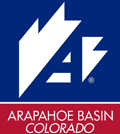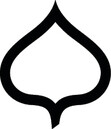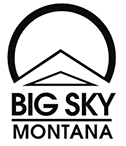The Triple Dip La Nina and Its Impacts
The last week of summer was pretty unseasonal in parts of the West, with high peaks in Colorado, the Northern Rockies, the Wasatch, the Sierra and Cascades all receiving a touch of winter and a coating of snow.
And then over the first couple of days of autumn, the mountains of New England got a dose of the white stuff.
It sure was nice to see Old Man Winter rouse from his summer slumber, but is it a harbinger of things is to come?
Depends on where you are.
The Scientific View
After crunching the numbers, the National Oceanic and Atmospheric Association, the federal government’s official weather prognosticator, is almost certain (91 percent) that North America will be affected by a third straight La Niña winter — a.k.a. a Triple-Dip La Niña — a phenomenon that has happened only twice since World War II.
What this means is fairly simple: What you experienced during the winter of 2021-22 will be much the same this go-round with the jet stream pattern favoring the Pacific Northwest and Northern Tier states.
That’s good news for such Western resorts as Crystal Mountain in Washington, Schweitzer in Idaho, Big Sky in Montana and Jackson Hole in Wyoming, which are expected to receive at or above average precipitation and average temperatures for the winter. Stowe and Jay Peak in Vermont and Maine’s Sugarloaf are also expected to get relatively pounded during snow season.
The resorts of Colorado and Utah — like Steamboat, Vail, Snowbird and Deer Valley — and those of New York and southern parts of New England — like Windham, Hunter Mountain, Killington and Waterville Valley — are anticipated to receive snowfalls and temperatures that are around average for their locales.
As for California and the Southwest — hello Tahoe Palisades and Mammoth Mountain, Telluride and Taos — welcome to another relatively warm and dry winter.
Other Voices
Not everyone is in complete alignment with NOAA’s predictions, of course, and the Farmer’s Almanac is one of them.
The annual publication, which has been around since the early 19th century, bases its seasonal predictions on “a mathematical and astronomical formula” and boasts an 80-percent accuracy rate.
And the Almanac is calling for “brisk with normal precipitation” in Washington, Oregon and Idaho; “mild and drier than normal” in California, Nevada, Utah and Arizona; “hibernation zone, glacial and snow-filled” in Montana, Wyoming, Colorado and the Upper Midwest; “significant shivers, slush, snowy and icy” in New England and the Northeast, and “unseasonably cold and snowy” in the Great Lakes region.
Finally, Direct Weather, an internet forecasting service which bases its predictions on annual snowfall averages, says that precipitation amounts will be above average in the Pacific Northwest, the Northern and Central Rockies, Upper Midwest, New England and the northern Atlantic Seaboard and below average in the Southwest (California, Nevada, southern Utah, southern Colorado, Arizona and New Mexico) with below average temperatures from the Rockies east and above average temperatures along the West Coast.
Featured Resorts

Killington Resort

Hunt Hollow

Pico Mountain

Mammoth Mountain

Palisades Tahoe

Arapahoe Basin

Aspen Snowmass

Sugarloaf

Sunday River

Big Sky

